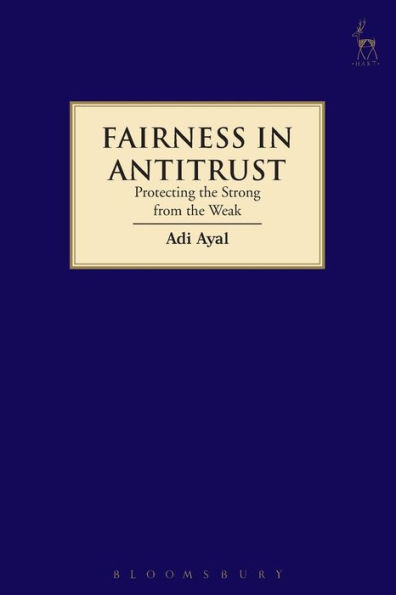Table of Contents
Preface v
Introduction 1
Part I The Setting of Antitrust
1 The Legal and Rhetorical Context of Antitrust 13
I The Development of Antitrust Law: Common Law Antecedents 14
A Early American Sentiment 16
B Shirting Focus: From Grants to Trusts 17
II Competition Law in Europe: Between National and Community Goals 19
A The Dual Goals of European Competition Law 23
III Introducing the Goals of Antitrust: Fairness, Efficiency and Beyond 25
IV Terminology and Focus: What is meant by 'Monopolist' and which Rights are Assessed? 30
Part II The Goals of Antitrust
2 The Societal Goals of Antitrust 37
I The Efficiency Model of Antitrust 38
A Allocative Efficiency 41
B Productive Efficiency 45
C Innovative Efficiency 47
D Expecting the Impossible: When Collusion is Efficient 52
E When Antitrust Fails: Costs of Enforcement and Strategic Manipulation 55
II Competition Beyond Efficiency: Between Proxy and Independent Goal 64
A Competition as a Democratic Process: Individual Choice and the Problem of Bigness 67
III Antitrust as Facilitating a Society of Entrepreneurs 72
A Competition as Facilitating Individual Choice 75
B Facilitating Economic Efficiency 76
C Limiting Social Inequality 76
D Economizing on Monopoly Regulation 77
3 Monopoly's Victims 79
I Consumers and their Centrality in the Fairness Discussion 81
A Is Every Buyer a Consumer or Merely the End User? 82
B The Interests and Rights of Consumers 85
II Antitrust as a Tool for Protecting Competitors 116
III Workers, Local Communities and Small Businesses: The Lost Classes of Antitrust 119
4 Monopolists' Rights 122
I Why the Verizon Case is Unhelpful: Baselines in Antitrust 124
II Who are the Monopolists? 128
III Monopoly Profit as a Property Right, or Competition as Creating Property? 129
IV Freedom of Contract 132
V The Role of Firms 134
A The Parallel Definition of Consumers and Producers 135
B Monopolistic Firms as Proxies for Individuals' Rights 135
C Firms as Independent Bearers of Rights 140
D Conclusion: Monopolistic Firms' Rights 142
Part III The Balancing Act of Antitrust
5 Towards a Constitutional Balance in Antitrust 147
I The Need for a Balancing Test 147
A The Case for Balancing 147
B The Case against Balancing 149
C Answers to the Case against Balancing 151
II Striking a Balance 154
A The Setting: Constitutional Law 155
B Laying Down the Ground Rules 155
C Limitations on State Intervention 156
D Policy versus Principle: Can Societal Goals Supersede Fairness? 157
III Boundaries to be Respected 158
A No One Side may be Preferred A Priori 158
B Protection of Monopolists while not Abandoning their Victims 158
IV Developing the Standard 159
A State versus Private Interests 159
B State versus Private Action 160
6 Formalization of Fairness: Keeping Everyone Envy-Free 164
I The Framework of Envy-Freeness 165
II Complications and Extensions 169
A Dynamics of Time: Production of Goods and People 169
B Is Pareto Efficiency to be Desired? 171
C Are Fan-Allocations Fair? 173
III Implementation to Antitrust 174
A Perfectly Competitive Markets 177
B Market Failures 178
C An Alternative Conception of Surplus 179
D Conclusion 180
7 The 'Clear and Present Danger' for Antitrust 182
I Protecting Monopolists' Market Access: The Logical Fallacy Argument 183
II Logical Fallacy or Balancing Act? Trade and Speech Compared 184
III The Balancing Test: Free Speech as a Guiding Force 186
IV Implementation to Antitrust 190
V Objections to the 'Clear and Present Danger' Standard 193
A Free Trade is Different from Free Speech 194
B Monopolists have no Right to Infringe upon Others' Rights 195
C The Standard Discriminates in Favour of Monopolists 195
D Antitrust Law must Prevent rather than Operate 'Ex Post' 196
E Current Antitrust Law already Considers Monopolists' Rights 196
VI Answers to the Praised Objections 197
A Free Trade is Different from Free Speech 197
B Monopolists have no Right to Infringe upon Others' Rights 197
C The Standard Discriminates in Favour of Monopolists 199
D Antitrust Law must Prevent rather than Operate 'Ex Post' 201
E Current Antitrust Law already Considers Monopolists' Rights 202
VII A Rebellious Thought 203
Conclusion and Future Implementations 207
Index 213



